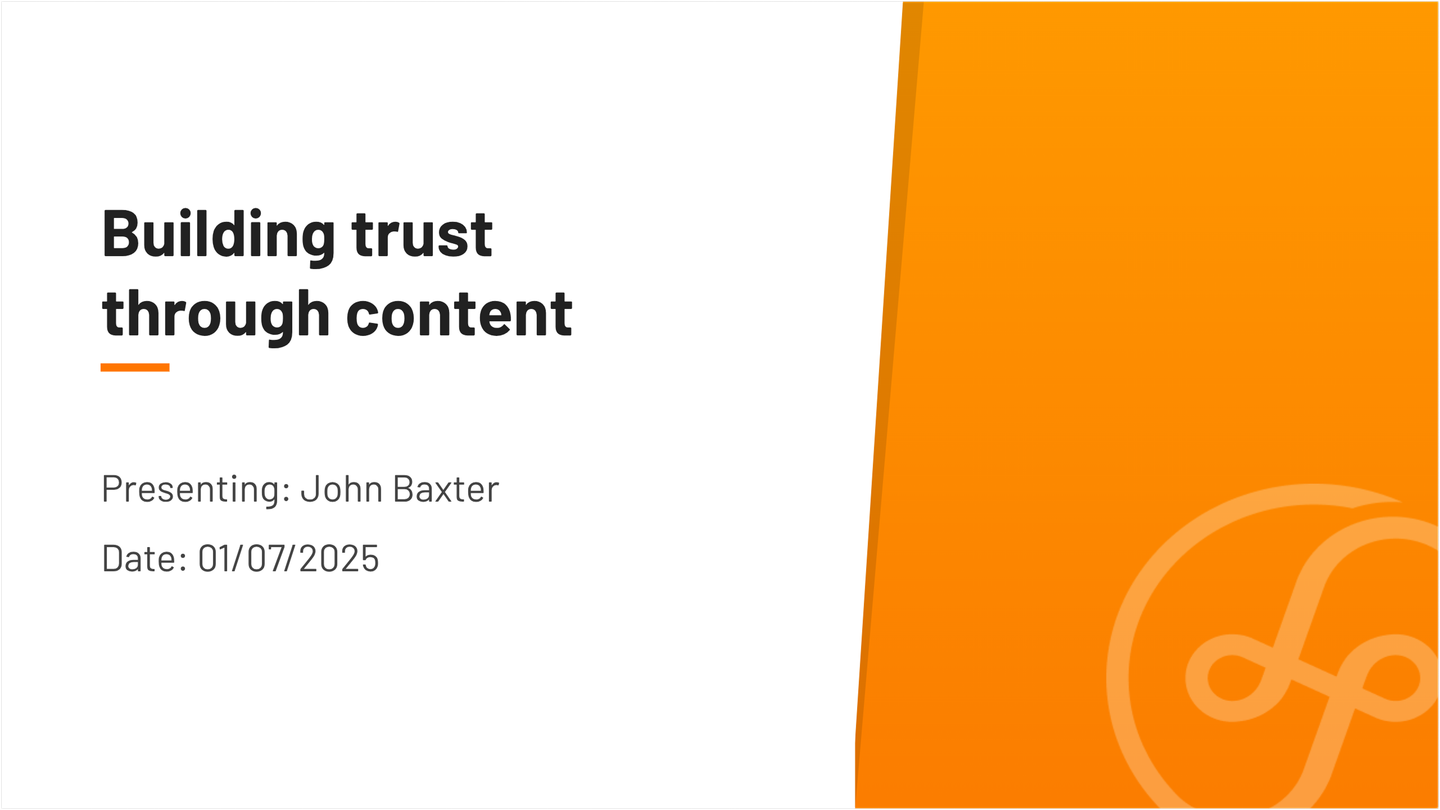Craft CMS vs WordPress: Which is right for you?
We all know that WordPress powers a huge chunk of the internet, blogs, brochure sites, big-name brands, you name it, someone’s built it with WordPress.
But just because it’s the most popular CMS, it doesn’t mean it’s the best choice for every project. That’s where Craft CMS comes in: smaller in market share, but bigger on flexibility, speed, and performance.
So how do the two really compare? Let’s take a closer look at Craft CMS vs WordPress to help you figure out which one is right for you.
If you’re completely new to Craft, you might want to read our intro to What is Craft CMS first.
Craft CMS vs WordPress: the big picture
WordPress is the default choice for many projects, and it’s easy to see why. The ecosystem is huge, there’s a plugin for almost everything, and finding support or documentation is never a problem.
Craft CMS, on the other hand, is a tad more specialist. It doesn’t have the same market share, but that’s not really its goal. Instead, it’s designed for projects that need a tailored, structured solution rather than a one-size-fits-all theme. In short: WordPress is strong on community, convenience, and quick wins. Craft is built for long-term flexibility and precision.
How flexible are Craft and WordPress?
WordPress websites often start with a theme. That is great if you want to launch quickly or don’t have the budget for a bespoke design, but it can also feel restrictive. Customising themes or working around plugin limitations is often where WordPress sites start to creak like your dad up in the attic.
Craft CMS works differently. It doesn’t assume what your site should look like. Instead, it gives developers more freedom to build a site that fits your content and your brand. If your site needs to reflect your content and brand with precision, not just fit into an existing mould, Craft gives you the flexibility to do that.
The editing experience: Craft vs WordPress
This is where the difference really shows. WordPress started life as a blogging tool, and over time has grown into a jack-of-all-trades CMS. The admin dashboard reflects that: powerful, yes, but often cluttered, especially once you add a handful of plugins. Editors can find it confusing, with menus scattered everywhere and content sometimes shoehorned into structures it wasn’t really built for.
Enter Craft! Designed from the ground up as a content management system, its admin interface is clean, modern, and intuitive. Content is stored in a structured way, with custom fields tailored to exactly what your site needs. For editors and marketing teams, that means less frustration and more focus on actually creating content.
If your team spends a lot of time adding and updating content, Craft will feel like a breath of fresh air, we promise… Have a squizz at our post on Craft CMS for content management.
Performance and security compared
As we all know, performance matters. Nobody likes a slow site, and search engines don’t either.
With WordPress, performance can vary a lot. A lean, well-built site can run beautifully, but throw in a heavy theme, a dozen plugins, and a cheap hosting package and things quickly slow down. Security is also a common concern, since its popularity makes WordPress a frequent target for attacks. Keeping things secure usually means staying on top of plugin updates which can be a bit of a headache.
In our opinion, Craft keeps things more focused. You start off with just what you need, and add only what makes sense for your project. There’s less setup, fewer plugins to manage, and fewer chances for something to go wrong.
Updates are regular and straightforward. And while no CMS is bulletproof, Craft’s pared-back setup means fewer security risks to manage. So, if speed and security are high on your list, Craft has the edge.
Comparing the costs
Here’s where WordPress often wins on paper: it’s free to download. You can set up a WordPress site with no license fees at all. But “free” isn’t always free in the long run. Many of the best themes and plugins cost money, and ongoing maintenance ( updates, fixes, and hosting) can add up over time.
Craft CMS takes a different approach. There’s a Solo edition that’s free for personal projects, but for business sites you’ll need the Pro edition, which comes with a one-off license fee and optional annual renewals for updates and support. While that’s a cost upfront, it usually means fewer surprise expenses later on, since you’re less reliant on third-party plugins.
In practice, WordPress is cheaper to start, but Craft often proves more predictable over the long haul.
Which CMS handles growth better?
WordPress can absolutely scale and it powers some absolutely huge sites! But as sites grow, they often require optimisation, some careful plugin management, and even custom development to keep everything stable.
Craft CMS was built with scalability in mind. Its structured content model makes it well-suited for complex, content-heavy sites, and its localisation features handle multilingual and multi-region sites cleanly. For organisations planning to expand, that structure makes scaling smoother.
So if your site is a simple blog or small business presence, WordPress may be more than enough. But if you’re planning to grow into multiple regions, languages, or even some chunky content hubs, Craft is often the better long-term bet.
Who is using each platform?
WordPress is everywhere, from personal blogs to small business websites, because it’s quick to set up and has plugins for just about everything. Craft CMS, on the other hand, is what brands like Netflix and Sonos turn to when they need something more flexible, scalable, and bespoke.
Headless CMS: how do Craft and WordPress compare?
“Headless” simply means separating your content from your website’s design, so the same content can be delivered to apps, digital displays, or any other platform.
WordPress can be made headless, but usually through additional plugins or developer workarounds. Craft CMS, on the other hand, has headless capabilities built in, making it easier to serve content wherever you need it. If you’re thinking beyond a traditional website and want to future-proof your content, Craft offers a cleaner, more flexible path into headless publishing. Check out Contentful’s guide to headless CMS if you want to dig deeper.
More FAQs
Is Craft CMS similar to WordPress?
Is Craft CMS any good?
Is Craft CMS better than WordPress?
Why are people moving away from WordPress?
Is WordPress still the most popular CMS?
Which is easier to use: Craft CMS or WordPress?
Does Craft CMS need a developer?
Which CMS works best for your project?
So, here's the final verdict: If you want a quick, budget-friendly website with a vast ecosystem of themes and plugins, WordPress might be the right choice. It’s familiar, it’s everywhere, and it can be made to work well if managed carefully.
But if you want a secure, scalable, and truly custom site tailored to your brand and content, Craft CMS is for you. Its flexibility, cleaner architecture, and editor-friendly interface make it a strong option for businesses that want more control.
| Feature | WordPress | Craft CMS |
| Cost | Free to start, but premium themes/plugins and maintenance add up | Paid license (Pro), but fewer hidden costs and more predictable long term |
| Flexibility | Relies on themes and plugins, can feel restrictive or bloated | Blank canvas for fully custom sites tailored to your needs |
| Editing | Powerful but cluttered dashboard, especially with lots of plugins | Clean, intuitive admin panel with structured content fields |
| Performance | Can be fast if optimised, but plugins/themes often slow it down | Lean and lightweight from the start, fewer plugins needed |
| Security | Frequent target for attacks due to popularity and plugin vulnerabilities | Smaller attack surface, regular updates, strong security reputation |
| Scalability | Can scale with optimisation and custom development | Built for large, multilingual, multi-site projects |
| Headless | Possible with plugins and extra setup | Headless support built in, easier for multi-channel publishing |
Final thoughts
At LuckyTurn, we build with Craft CMS because we like its flexibility, performance, and the peace of mind it gives our clients. But that doesn’t mean WordPress isn’t a good fit too, in some cases. The key is choosing the CMS that aligns with your goals, your team, and your growth plans.
Still weighing up the pros and cons? We’re happy to chat through the options with you! For more detail on how we use Craft, take a look at our Craft CMS agency services.








